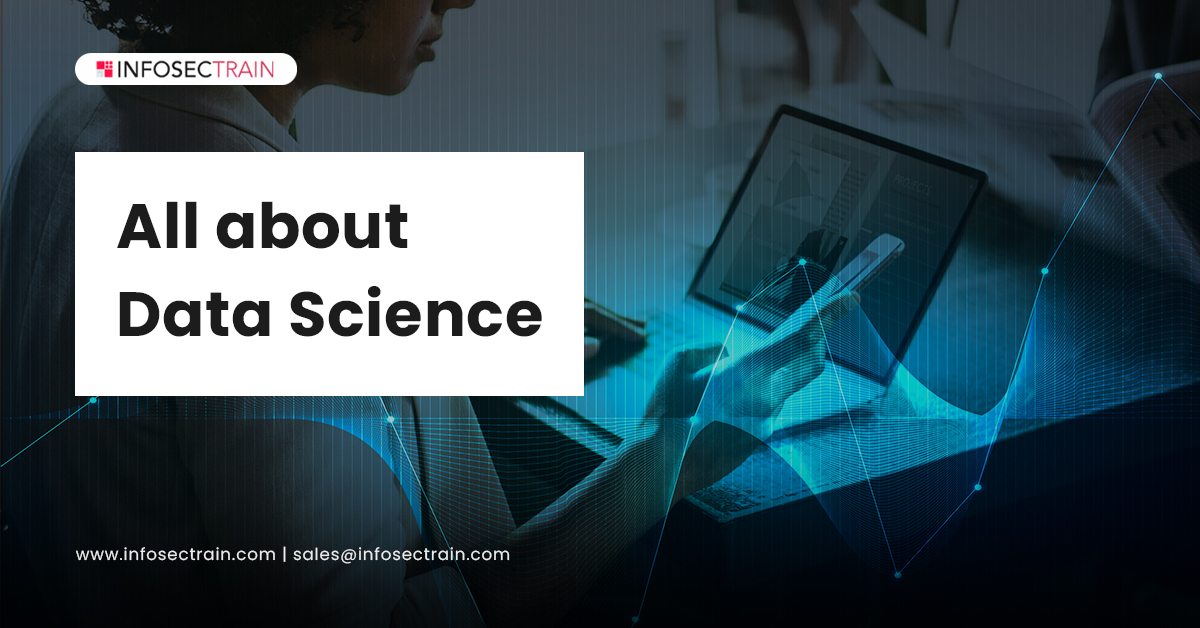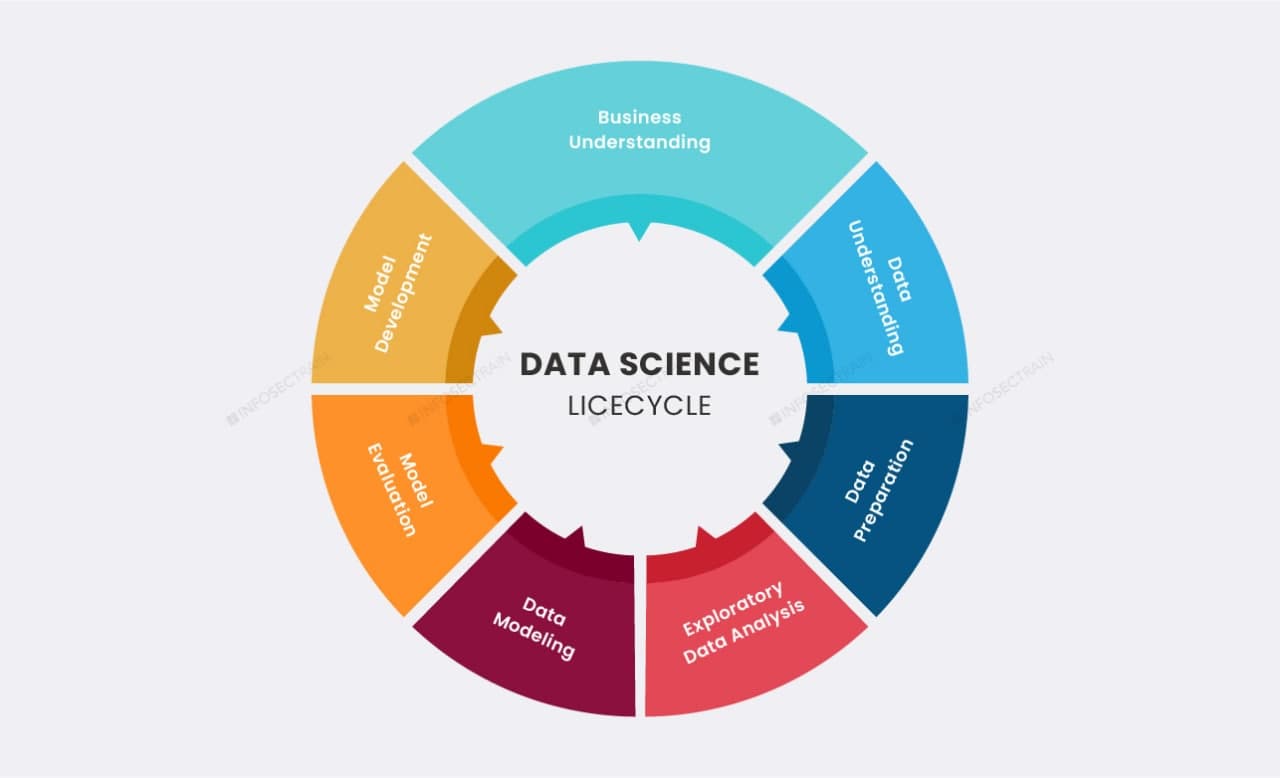All About Data Science
Data science is one of the most favourable careers as organizations produce a massive amount of data, and they need data scientists to analyze, mine, clean, and present that data. In this new age, organizations use data science to expand their business and improve customer satisfaction. In this blog, you will understand what data science is, the data science lifecycle, and data science applications. So, let’s get started!!

What is Data Science?
Data science is the combination of various fields like AI (Artificial Intelligence), statistics, data analysis, and scientific methods to yank value from the data. Data Scientists are expected to be very skillful and capable of analyzing data collected from customers, the web, sensors, smartphones, and various resources to derive actionable insights.
A data scientist prepares data for analysis, including cleansing, aggregating, and manipulating it to perform advanced data analysis. Analytics and data scientists can then review the results to discover patterns and give business leaders insight.
Data Science’s Life Cycle

Step1: Business understanding: Business understanding is the first and most important step of the data science lifecycle. It is essential to know the problem statement and ask the correct and relevant questions to the client or customer. This helps us understand the data, and we can also emanate significant insights from the data.
We have amazing technology that makes our lives easy, but the completion of a successful project depends on the questions asked about a dataset.
We use data science to answer the following questions.
- Regression (how many or how much?)
- Classification (which category?)
- Clustering (which group?)
- Anomaly detection (is this weird?)
- Recommendation (which option to take?)
Additionally, the data scientists should determine the variables that will be needed to predict the project’s main goal at this stage.
Step 2: Data Understanding: After gaining an understanding of the enterprise, the next stage is to gain an understanding of the data. This is a list of all the data that can be accessed. Here, you must work closely with the business group since they are well aware of what information is available, what facts should be used for this business challenge, and other relevant information. This stage entails characterizing the data, its structure, significance, and the type of records it contains. Graphical charts can be used to explore the data. Basically, you can extract any facts about the information by simply exploring the data.
Step 3: Data Preparation: This step consists of a process that involves selecting the relevant data, integrating it through merging data sets, cleaning the data, treating the missing values by removing them or imputing them, treating inaccurate data by removing it, testing for outliers using box plots, and addressing those outliers. Derive new elements from current data to create new data. Restructure the data in accordance with the desired structure and eliminate undesirable columns. This is the most time-consuming and challenging step in the entire existence cycle, but it is also one of the most essential. The accuracy of your model depends on your data.
Step 4: Exploratory Data Analysis: The purpose of this step is to gain an understanding of the answer and the factors that affect it before constructing a real model. The distribution of data within distinct variables is visualized using bar graphs, and relations between these variables are represented by scatter plots and warmth maps. Each characteristic can be explored separately or in combination with other characteristics by using a range of data visualization strategies.
Step 5: Data Modeling: For almost all data scientists, this is the most exciting stage. It is called “the stage where the magic happens.” Remember that only the right props and techniques can make magic happen. When it comes to data science, “data” is that “prop,” and data preparation is that technique. Therefore, before moving on to this step, make sure you spend adequate time on the preceding steps. Modeling can help us find behaviors and patterns in data.
The data model takes organized data as input and outputs the desired result. This stage involves picking the appropriate model, whether the problem is a classification problem, a regression challenge, or a clustering problem. After agreeing on the model family and the number of algorithms inside that family, we must carefully select the algorithms to implement and enforce. To get the best results, we need to fine-tune each model’s hyperparameters. We also need to ensure a good balance between overall performance and generalizability. We don’t want the model to study the data and perform poorly on new data any longer.
Step 6: Model Evaluation: This is an evaluation to see if the model is ready to be deployed. A cautiously formulated set of assessment metrics is used to evaluate the model on unseen data. In addition, we must ensure the model is true to reality. If we do not achieve a quality result in the evaluation, we must repeat the entire modeling procedure until our preferred metrics stage is reached.
Step 7: Deployment of the Model: The model is deployed in the preferred structure and channel after a rigorous evaluation. This is the last and final step in the data science life cycle, and each step in the data science life cycle depicted above must be worked upon carefully.
Where can we use Data Science?
Here are the applications of data science:
- Detection of fraud and risk
- Healthcare
- Internet search
- Targeted advertising
- Website recommendations
- Advanced image recognition
- Speech recognition
- Airline route planning
- Gaming
- Augmented Reality
Final words
Data science is a booming field that is assisting businesses not just in better understanding their industries and making the best decisions but also in better understanding their customers. The people in charge of analyzing, cleansing, gathering, and organizing data are known as data scientists. As a result, data science careers are quickly expanding in this era. Every company, regardless of its size, is seeking individuals that can grasp and analyze their data. So check out InfosecTrain for data science training.




 1800-843-7890 (India)
1800-843-7890 (India) 
